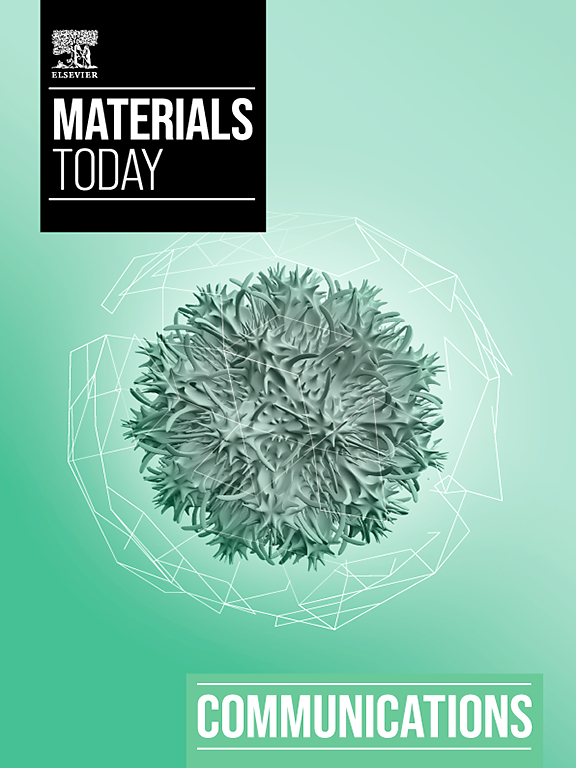Catalytic decomposition of residual hydrogen peroxide in N-methylmorpholine-N-oxide by heteroatom doping modified activated carbon
IF 4.5
3区 材料科学
Q2 MATERIALS SCIENCE, MULTIDISCIPLINARY
引用次数: 0
Abstract
N-methyloxymoroline-N-oxide (NMMO) has been used in large quantities for the production of new solvent-treated cellulose. But, excess HO used in the synthesis of NMMO from N-methylmorpholine (NMM) can adversely affect the quality of the product. This study introduces a novel approach using nitrogen and sulfur co-doped activated carbon (N,S co-doped AC) to catalyze the decomposition of residual HO in NMMO products. Characterization techniques including N adsorption/desorption, Raman, TEM, FT-IR, and XPS were used to study the surface properties and chemistry of activated carbon doped with heteroatoms. The results revealed that AC800NS800 (800 is the calcinate temperature, NS is denoted by the co-doped of N and S) exhibited superior catalytic performance for HO decomposition compared to singly doped activated carbons. Notably, over 95 % of HO in NMMO was decomposed, which the catalytic efficiency of AC800NS800 is no significant loss after ten times reuse. The exceptional catalytic activity of AC800NS800 is attributed to the presence of various functional groups on the surface (graphitic carbon, graphitic nitrogen, and pyrrole nitrogen). EPR tests identified HO• and O as the primary reactive species in the HO decomposition process. This study provides valuable insights into the catalytic decomposition of HO in NMMO solutions and offers a significant reference for the production of high-quality NMMO.杂原子掺杂改性活性炭催化分解 N-甲基吗啉-N-氧化物中的残余过氧化氢
N-甲基羟吗啉-N-氧化物(NMMO)已被大量用于生产新型溶剂处理纤维素。但是,从 N-甲基吗啉(NMM)合成 NMMO 时使用过量的 HO 会对产品质量产生不利影响。本研究介绍了一种使用氮和硫共掺杂活性炭(N,S 共掺杂 AC)催化 NMMO 产品中残余 HO 分解的新方法。表征技术包括氮吸附/解吸、拉曼、TEM、傅立叶变换红外光谱和 XPS,用于研究掺杂杂原子的活性炭的表面性质和化学性质。结果表明,与单一掺杂的活性炭相比,AC800NS800(800 为煅烧温度,NS 表示 N 和 S 的共掺杂)在 HO 分解方面表现出更优越的催化性能。值得注意的是,NMMO 中超过 95% 的 HO 被分解,而 AC800NS800 的催化效率在重复使用十次后也没有明显下降。AC800NS800 特殊的催化活性归功于其表面存在的各种官能团(石墨碳、石墨氮和吡咯氮)。EPR 测试确定 HO- 和 O 是 HO 分解过程中的主要反应物。这项研究为了解 HO 在 NMMO 溶液中的催化分解提供了宝贵的见解,并为生产高质量的 NMMO 提供了重要参考。
本文章由计算机程序翻译,如有差异,请以英文原文为准。
求助全文
约1分钟内获得全文
求助全文
来源期刊

Materials Today Communications
Materials Science-General Materials Science
CiteScore
5.20
自引率
5.30%
发文量
1783
审稿时长
51 days
期刊介绍:
Materials Today Communications is a primary research journal covering all areas of materials science. The journal offers the materials community an innovative, efficient and flexible route for the publication of original research which has not found the right home on first submission.
 求助内容:
求助内容: 应助结果提醒方式:
应助结果提醒方式:


